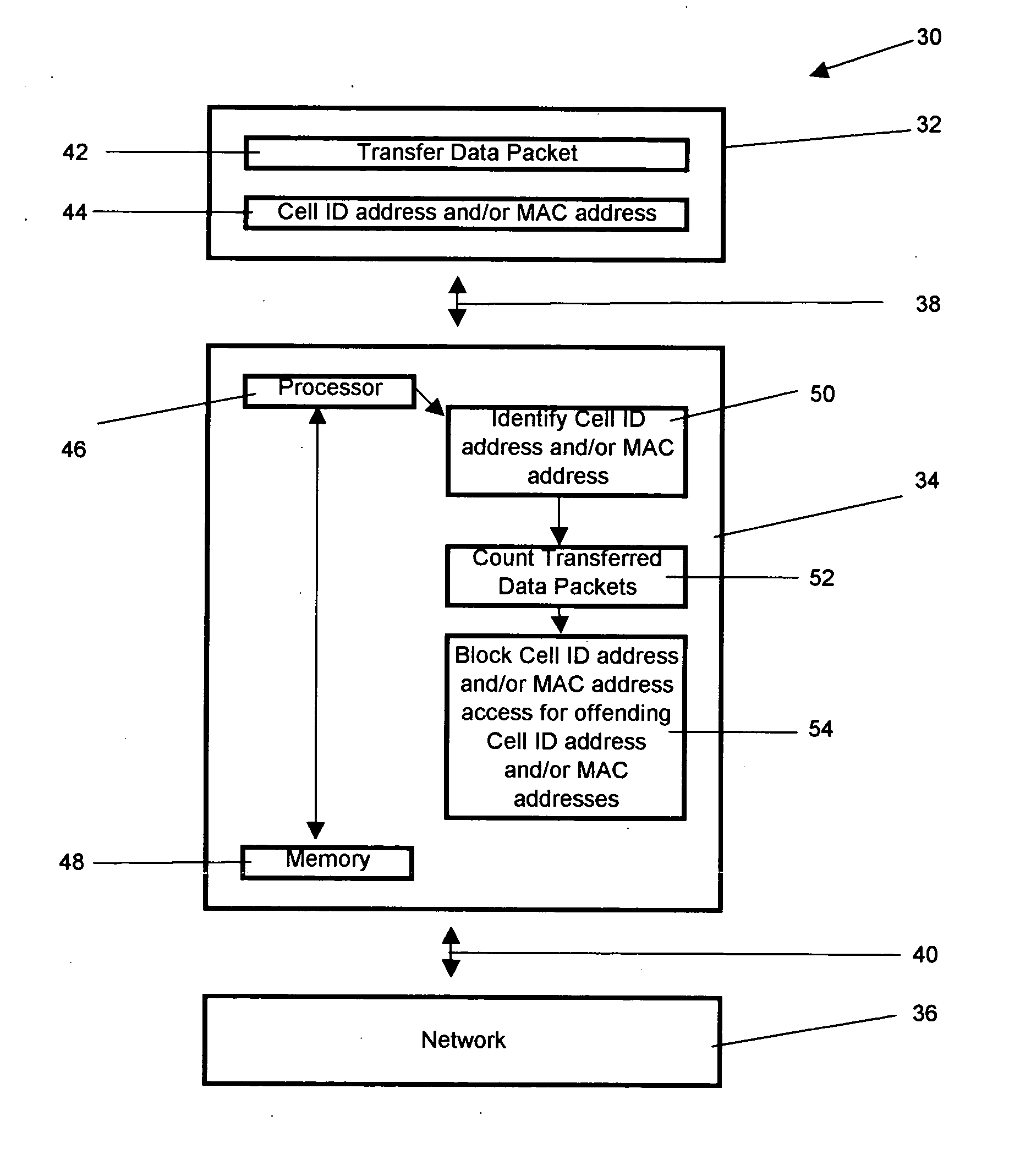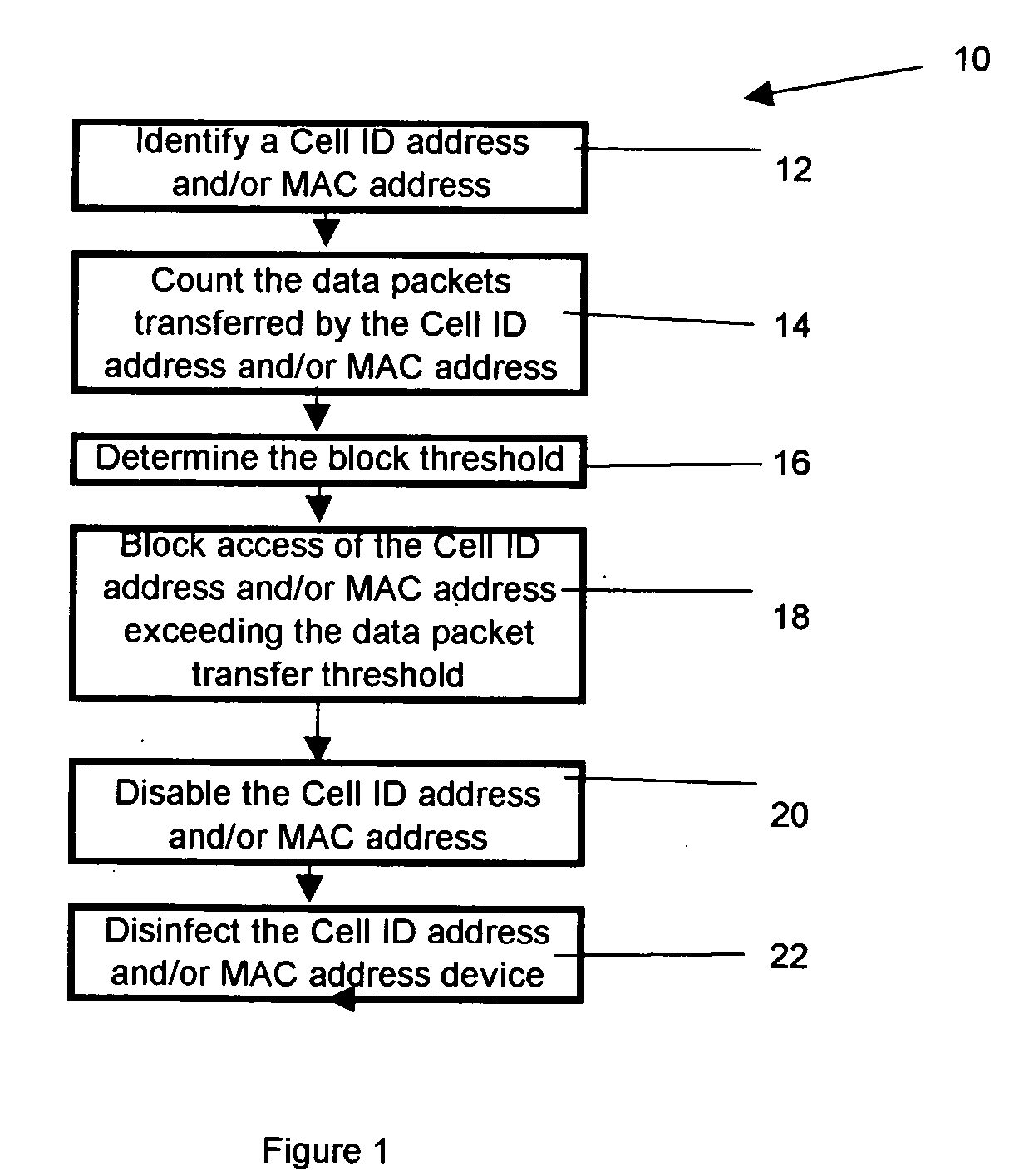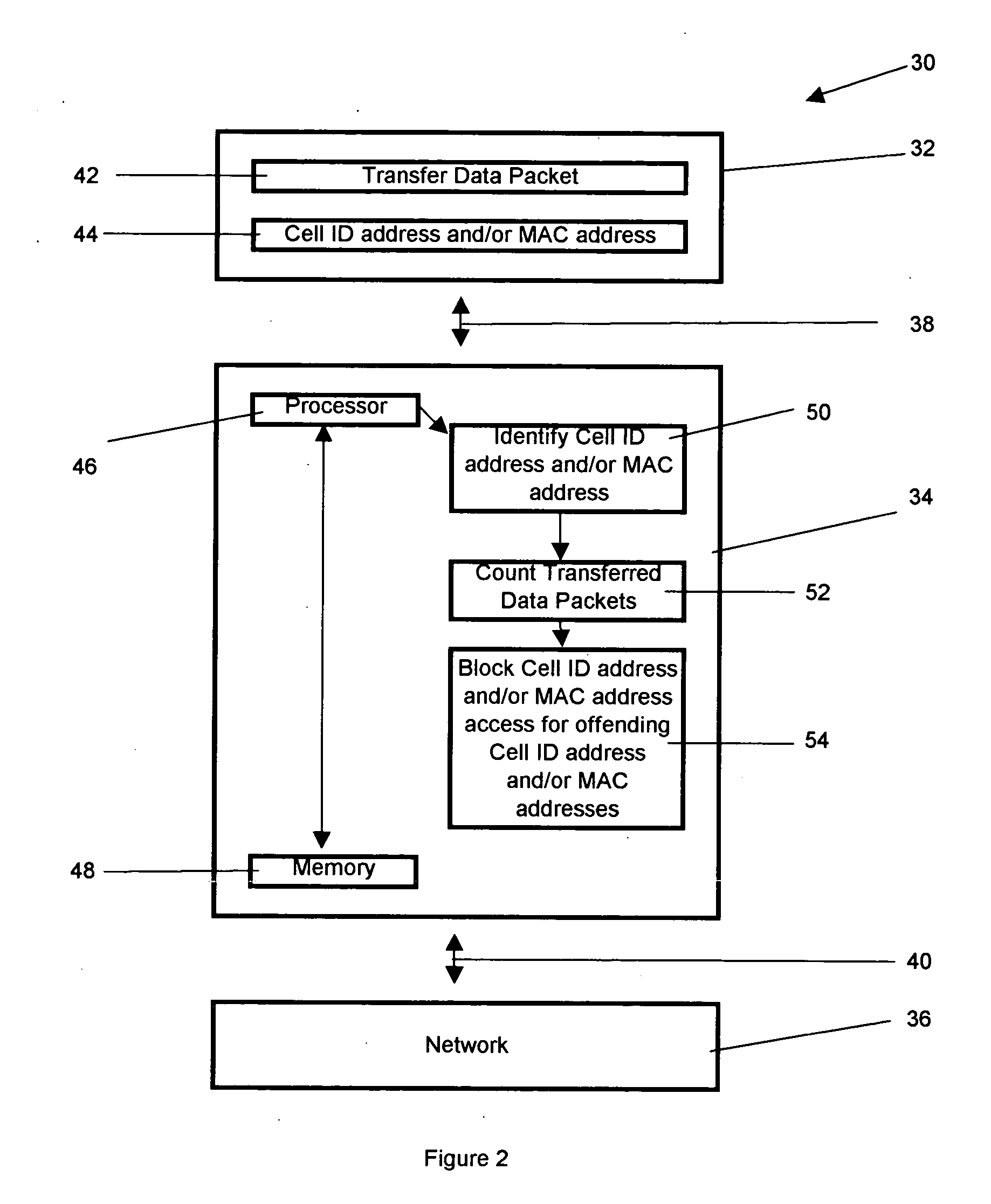Method of preventing denial of service attacks in a cellular network
a cellular network and cellular network technology, applied in the field of preventing cellular network denial of service attacks, can solve the problems of increasing the risk of intrusion and attack, increasing the threat of brute force attacks performed via virus infection on cellular telephones, and doing nothing
- Summary
- Abstract
- Description
- Claims
- Application Information
AI Technical Summary
Benefits of technology
Problems solved by technology
Method used
Image
Examples
Embodiment Construction
[0023] Referring now to FIG. 1, a method for preventing denial of service attacks in a cellular network 10 is shown. The invention comprises identifying 12 an address, typically at least one of a cellular identification address and a media access control address. A number of data packets transferred by the address is counted 14. A threshold of denial of service is determined 16. If the number of data packets transferred exceeds the threshold, access to the network is blocked 18. If the number of data packets transferred exceeds the threshold at least one of the cellular identification address and the media access control address is disabled 20 and a device associated with at least one of the cellular identification address and the media access control address is disinfected. In other embodiments, the counting may per performed per time unit, the blocking may be active for the pre-set interval, the address may be disabled, the address may be the cellular identification address, the a...
PUM
 Login to View More
Login to View More Abstract
Description
Claims
Application Information
 Login to View More
Login to View More - R&D
- Intellectual Property
- Life Sciences
- Materials
- Tech Scout
- Unparalleled Data Quality
- Higher Quality Content
- 60% Fewer Hallucinations
Browse by: Latest US Patents, China's latest patents, Technical Efficacy Thesaurus, Application Domain, Technology Topic, Popular Technical Reports.
© 2025 PatSnap. All rights reserved.Legal|Privacy policy|Modern Slavery Act Transparency Statement|Sitemap|About US| Contact US: help@patsnap.com



